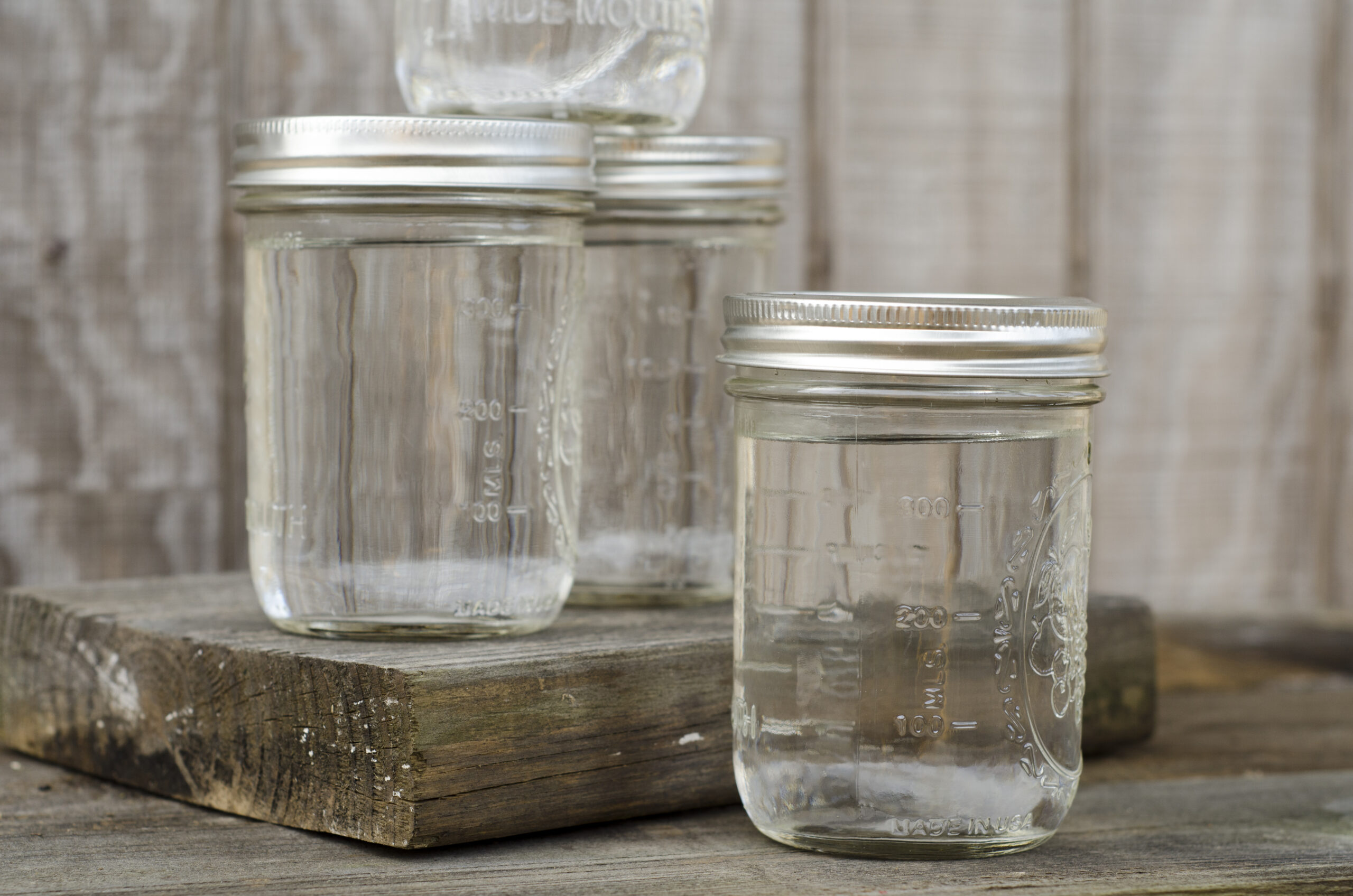You made a big batch of soup or sauce and want to save some for another day. Freezing is a great option.I have been phasing out plastic storage containers and looking for creative ways to store and freeze sauces and soups. Glass works really, well but requires a few tricks to ensure that it does not crack.
Soups or sauces with dairy do not freeze well. Nor do those with noodles.The texture changes and the flavor is effected. Dairy will split when frozen, is grainy once defrosted and noodles get mushy. If you are making a soup or sauce with dairy, consider leaving the dairy out when freezing and adding it after defrosting. Same goes for noodles, prepare them when you are ready to eat the soup/sauce and add them right before serving.
What Type of Jar to Use

Glass jars usually have two shapes, wide mouth ones with straight sides and those with a ‘shoulder’. Some jars come with Freezer Safe labeling.
Wide mouth jars with straight sides are preferable as there is less of a chance they will crack and easier to pour your soup/sauce into.
If you use regular mouth mason jars, that is, one with a ‘shoulder’ you’ll need to leave even more space at the top than you would with a wide mouth.

Freezing the Soup/Sauce
Let the soup/sauce come to room temperature on the counter. After it is at room temperature, fill your jars and place them in the refrigerator with the lids on to cool further. Ideally a few hours. This will result in less shock to the glass than if you went from room temperature on the counter, right to the freezer.
Preferably use wide mouth mason jars as they are easier to fill and there is not a ‘shoulder’ to think about when filling.
Leave some room at the top of each jar regardless of whether you are using a wide mouth or one with a shoulder (2 inches is a good rule of thumb). The soup/sauce will expand when frozen.
If using a regular mouth jar, fill 2 inches below the shoulder.
When you are ready to transfer your jars from the refrigerator to the freezer, loosen the lids and place in the freezer until they are completely frozen. Then tighten the lids. To prevent freezer burn, can place a piece of plastic wrap over the liquid before tightening the lid.
And definitely leave some space in between jars in the freezer.
Labeling – it is always a good idea to label your soup sauce with the contents and date. Once frozen, it is hard to tell what is inside the jar.
TO RECAP
- LET YOUR SOUP/SAUCE COOL TO ROOM TEMPERATURE.
- POUR INTO MASON JAR, LEAVING ROOM AT TOP. AOBUT 2 INCHES. AND IF USING A JAR WITH A SHOULDER, ONLY FILL TWO INCHES BELOW THE SHOULDER.
- LABEL JARS WITH CONTENTS AND DATE.
- CHILL IN REFRIGERATOR.
- OPTION TO PLACE A LAYER OF PLASTIC ON TOP OF SOUP/SAUCE.
- FREEZE WITH LIDS ATTACHED LOOSELY.
- ONCE FROZEN, TIGHTEN LIDS.
- STORE MULTIPLE JARS WITH SOME ROOM BETWEEN THEM.
REHEATING YOUR SOUP/SAUCE
You are ready to use your frozen soup or sauce. What’s next. Well there is one thing not to do…
Never ever put a frozen jar into the microwave. Even if it is tempered glass, which is made to withstand heat. The extreme quick change in temperature from frozen to hot will result in cracked glass.
Always thaw your soup/sauce before you warm it up.
HOW TO THAW
Thaw in the Freezer – You can take the jar out of the freezer 1-3 days ahead of when you’ll need it and thaw it in the refrigerator. If you are like me and don’t plan your meals a few days out, you’ll probably want to thaw using the Water Bath method.
Water Bath – You can place the jar in cool water in a pot or large bowl and change the water every 30 minutes. It will take several hours to thaw this way.
Once the soup/ sauce has thawed enough on the outer edges, you can transfer the contents of the jar into a saucepan and heat over low to medium heat on the stove. If thawing in a water bath, chances are you will still have a block of frozen soup/sauce.
It’s usually best to consume frozen pasta sauce, like Nonny Meatless Tomato Sauce or soup within three months. After that, it’s possible that your frozen soup/sauce may experience freezer burn, which can affect its consistency and flavor.
